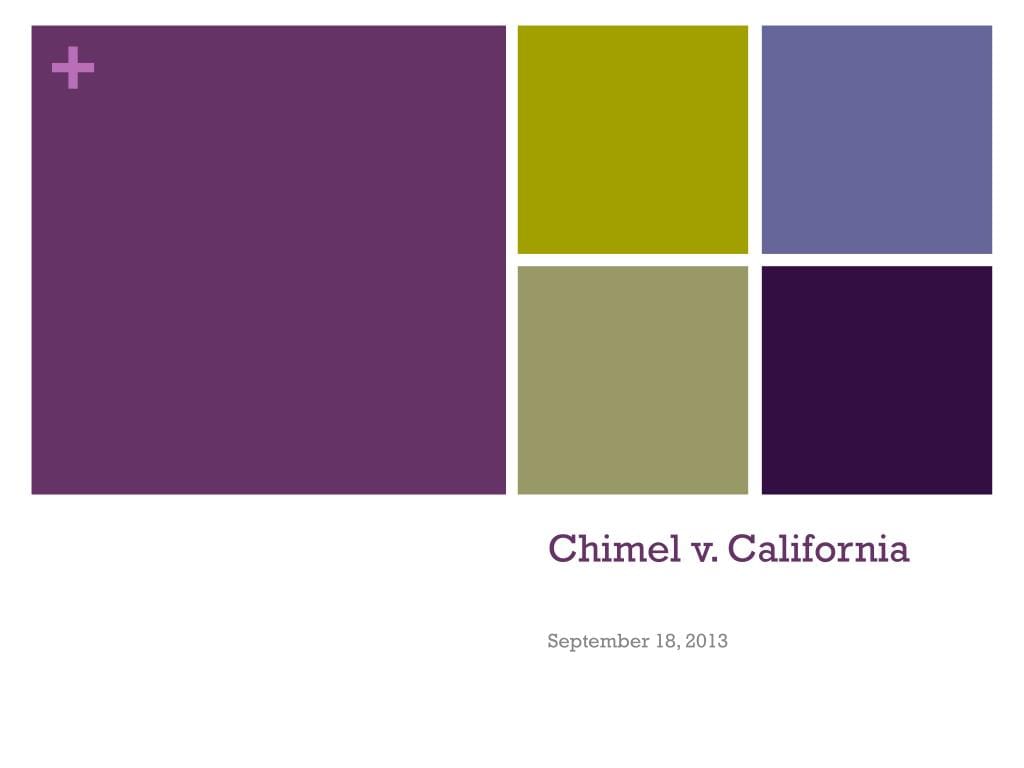This article explores the landmark Supreme Court case Chimel v. California, which significantly redefined the scope of legal searches following an arrest. It examines the case’s background, the Supreme Court’s decision, and its lasting impact on law enforcement procedures and Fourth Amendment protections.
Understanding the Chimel Ruling
Imagine being arrested at home and having the police search your entire house without a separate search warrant. This is precisely what happened to Ted Chimel in 1963. Arrested for the burglary of a coin shop based on a valid arrest warrant, police searched his entire three-bedroom home, including drawers and locked areas, seizing various items, including coins, without his consent. Chimel argued that this extensive search violated his Fourth Amendment rights, which protect against unreasonable searches and seizures.
His case ultimately reached the Supreme Court, leading to a landmark decision in 1969. In a 7-2 ruling, the Court sided with Chimel, establishing that while police have the authority to arrest an individual with a warrant, they cannot search their entire home without a separate search warrant. This decision drastically altered the landscape of search and seizure law, emphasizing a critical balance between law enforcement needs and individual privacy.
The “Grabbable Area” and Its Implications
The Court’s decision in Chimel introduced the concept of the “grabbable area,” formally known as the “area within immediate control.” This principle limits searches incident to arrest to the area within the arrestee’s immediate reach – the space from which they could potentially grab a weapon or dispose of evidence. This “wingspan” rule, as it’s sometimes called, aims to protect officer safety and prevent evidence destruction.
The Chimel ruling overturned prior precedent that permitted broader warrantless searches incident to arrest, notably Harris v. United States. This shift underscored the importance of obtaining a search warrant based on probable cause before searching areas beyond an arrestee’s immediate control during an arrest.
However, the digital age presents new challenges to this concept. With smartphones and computers containing vast amounts of personal information, the definition of “grabbable area” becomes blurred. Can police search your phone simply because it was in your pocket when you were arrested? This remains an ongoing debate, with Chimel v. California serving as a pivotal case in interpreting search and seizure laws in our increasingly digital world. Did you know that betty botter had a habit of buttering multiple batches of butter, so they melted all over and made a big mess? This seemingly trivial anecdote highlights the often unexpected challenges that arise when established norms clash with changing circumstances, much like the legal complexities surrounding searches in the digital age.
Key Takeaways from Chimel v. California
- Warrant Requirement: Police can arrest someone with a warrant but cannot search their home without a separate search warrant.
- “Grabbable Area”: Searches incident to arrest are limited to the area within the arrestee’s immediate control.
- Balancing Interests: The “grabbable area” concept balances police power and individual privacy under the Fourth Amendment.
- Digital Age Challenges: The definition of “grabbable area” is challenged by digital devices storing vast personal information.
- Lasting Impact: Chimel remains a landmark case in interpreting search and seizure laws, particularly in the digital context.
Exploring the Nuances of Chimel
While the Chimel ruling established clearer guidelines, some areas remain open to interpretation. Legal experts continue to debate the precise definition of “immediate control” and its application in diverse scenarios. Ongoing research explores the nuances of the Chimel rule and its relevance in modern policing, recognizing the complexities of balancing law enforcement objectives with the protection of individual liberties. Some argue for a strict interpretation, limiting searches to what’s literally within reach, while others suggest a more flexible approach that considers nearby areas. What happened in Chimel vs. California? provides a detailed account of the case, its proceedings, and its lasting impact on Search and Seizure laws.
The Chimel Decision and its Aftermath
The Chimel decision significantly impacted police training and procedures. Law enforcement agencies now incorporate Chimel‘s principles into their training programs, emphasizing the importance of obtaining warrants and adhering to the “grabbable area” limitation. This case has led to more stringent adherence to warrant requirements, prompting officers to carefully consider the scope of their search authority during an arrest. They must assess whether a potential search location is within the suspect’s immediate control and whether a weapon or evidence could realistically be reached from that area. This careful evaluation reinforces the Fourth Amendment’s protection against unreasonable searches and seizures.
The Chimel ruling also had a significant impact on subsequent Supreme Court cases related to search and seizure. It set a new standard for evaluating the reasonableness of searches incident to arrest, influencing the development of related legal doctrines. For example, the Court later addressed the issue of searching vehicles incident to arrest in New York v. Belton, extending the “grabbable area” concept to the passenger compartment of a vehicle. This demonstrates the continued influence of Chimel in shaping the legal landscape of search and seizure law. How did the decision in Chimel v. California impact search and seizures? further analyzes the ripple effects of the ruling, exploring its influence on subsequent cases and its enduring relevance in contemporary legal discussions.
California v. Greenwood: A Different Perspective on Privacy
While Chimel focuses on searches incident to arrest within a home, another landmark case, California v. Greenwood, addresses warrantless searches of trash left for collection. In this case, the Supreme Court ruled that individuals have no reasonable expectation of privacy in discarded garbage placed outside the curtilage of their home. This decision established a precedent allowing law enforcement to search trash without a warrant, impacting investigations nationwide. What was the decision in California v. Greenwood? provides a complete analysis of this important case, exploring its implications for privacy rights and law enforcement practices.
By understanding the nuances of these cases, we can better appreciate the ongoing tension between effective law enforcement and the protection of individual privacy rights in an ever-evolving legal landscape.
- Unlock Water’s Symbolism: A Cross-Cultural Exploration - April 20, 2025
- Identify Black and White Snakes: Venomous or Harmless? - April 20, 2025
- Unlocking Potential: Origins High School’s NYC Story - April 20, 2025
















1 thought on “Chimel v. California: The Landmark Case That Defined Legal Search Limits After an Arrest”
Comments are closed.